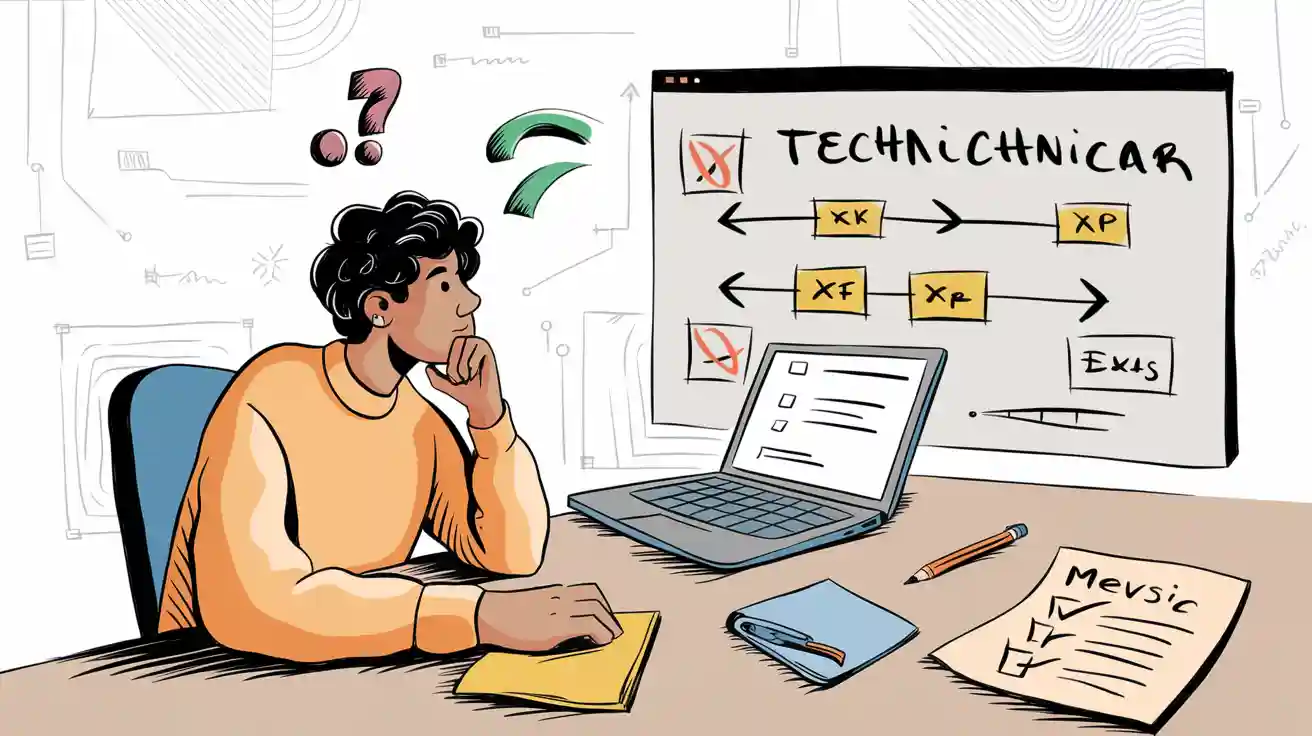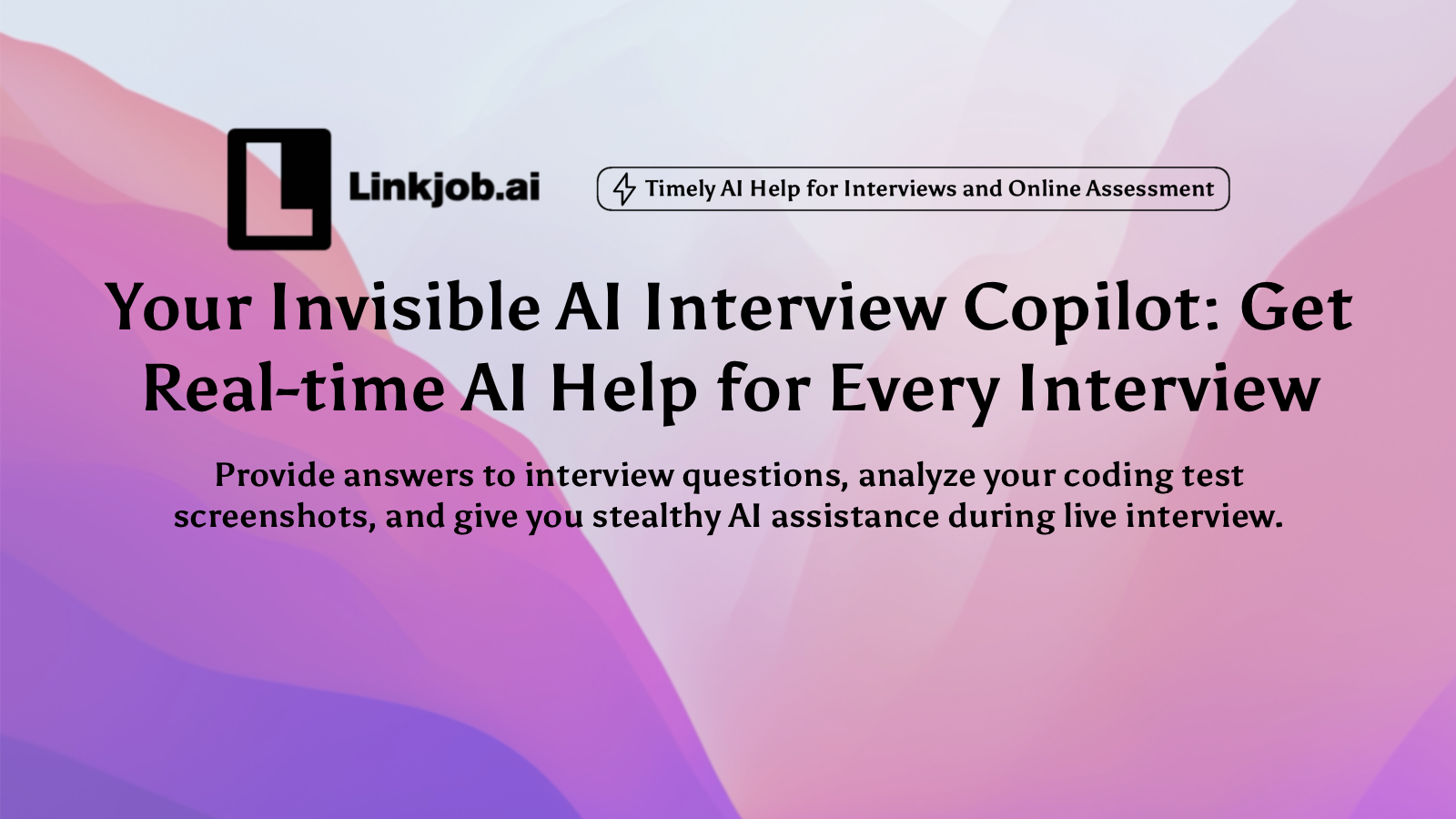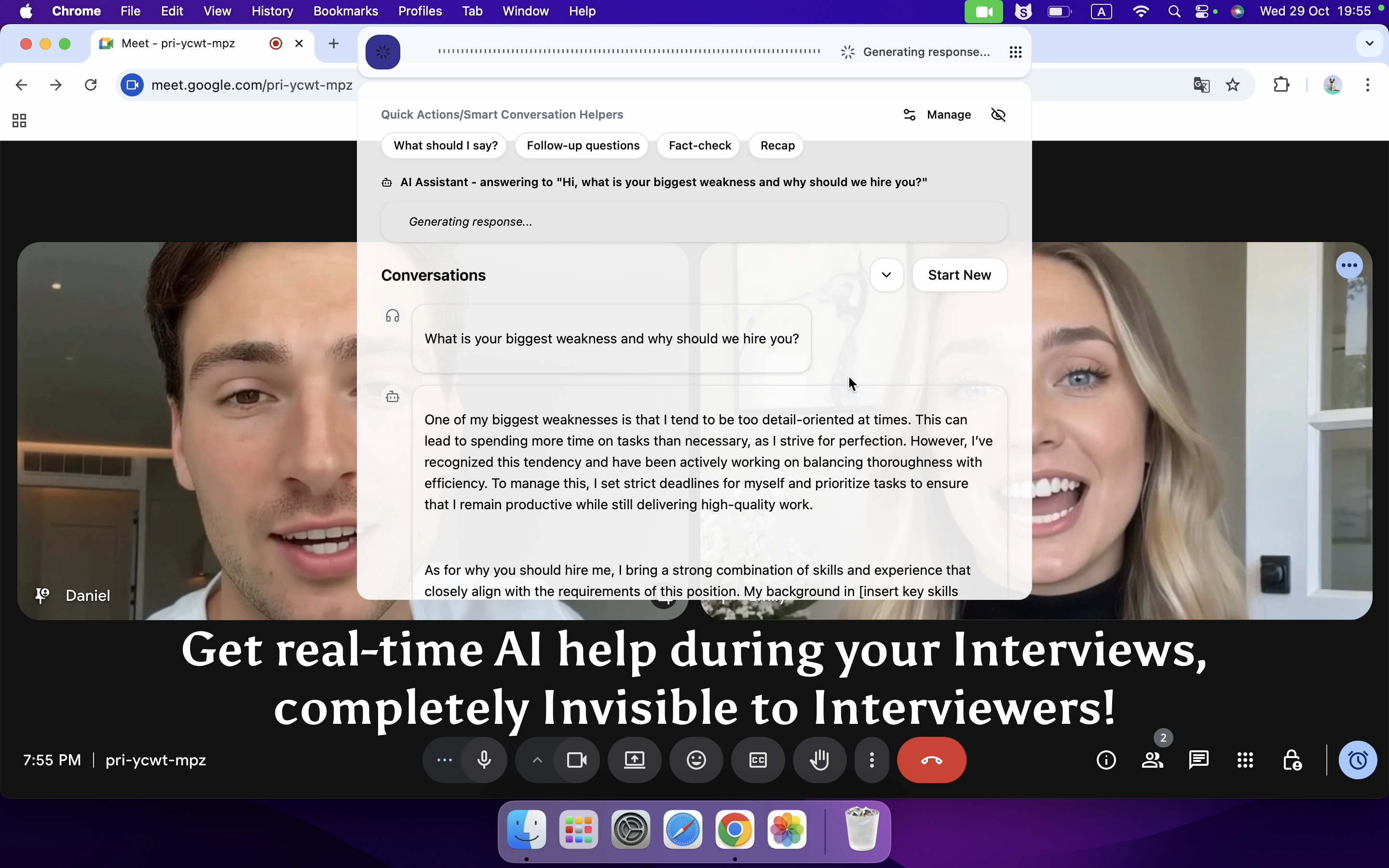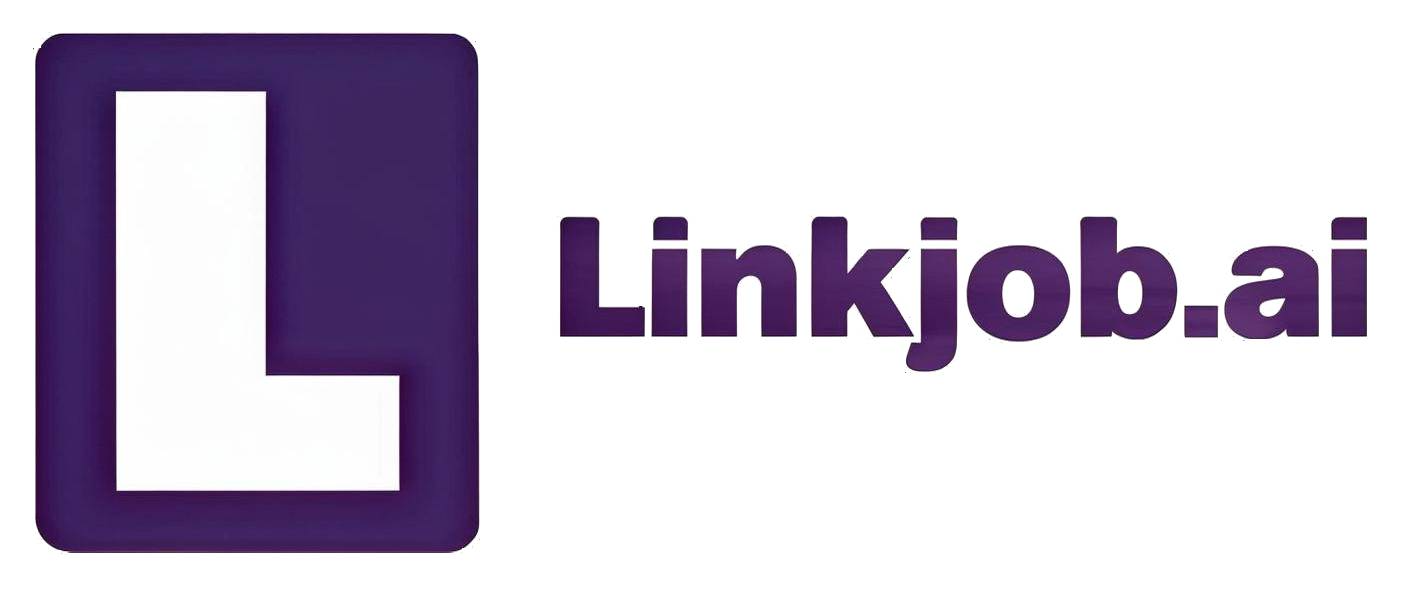What I Learned From My Palantir Decomposition Interview Mistakes and Fixes

Panlantir Decomposition Interview Experience
I just wrapped up my Palantir interview and wanted to share what this notoriously tough company is really like.I am really grateful for the tool Linkjob.ai, and that's also why I'm sharing my entire interview experience here. Having an invisible AI assistant during the interview is indeed very convenient.
Core Characteristics
Unlike FAANG, Palantir puts a massive emphasis on value alignment. Every round includes behavioral questions, and the technical problems are embedded in real-world contexts. They're not the kind I can just grind LeetCode to ace.
Interview Highlights
The first recruiter call was already rigorous, with a ton of questions about my motivations. The technical screen involved designing a data pipeline monitoring system; the prompt was intentionally vague, so I had to proactively ask clarifying questions.
What stood out most in the onsite was their unique Problem Decomposition session. No coding at all, just discussing how to tackle complex real-world problems.
The system design round covered multi-tenant document collaboration, with a focus on tenant isolation and security. The code review gave me financial transaction code, where I had to spot race conditions and security issues.
Practical Tips
Prep should prioritize problem-solving mindset over algorithmic tricks. You need to demonstrate empathy for the end user, and justify every technical decision based on its impact on them.
For behavioral questions, prepare examples of ethical decision-making, since Palantir deals with a lot of sensitive data. Have a genuine understanding of the company's mission. Don't just pay lip service.
Palantir Decomposition Interview Overview
Format and Focus
When I first heard about the Palantir decomposition interview, I expected another round of coding problems or a technical phone screen. I quickly learned that this interview stands out. The Palantir decomposition interview usually lasts about an hour and takes place onsite. Instead of just writing code, I had to solve a high-level, real-world problem. The focus was on breaking down the problem, thinking about the end user, and communicating my ideas clearly.

Here’s a quick look at the structure:
Aspect | Details |
|---|---|
Duration | About 1 hour |
Format | Onsite technical round |
Focus | Solve a real-world problem with strong problem decomposition and user focus |
Structure | Two parts: 1) Ideation (breakdown and solutions), 2) Execution (high-level design) |
Coding Requirement | Minimal coding, maybe some pseudocode; mostly discussion-based |
Behavioral Questions | Mixed in, about 20 minutes during the interview |
Importance | Core part of the Palantir interview process |
Preparation | Master problem decomposition techniques, do mock interviews, learn Palantir’s culture |
During the Palantir decomposition interview, I faced a mix of behavioral and technical questions. The interviewer wanted to see how I handled open-ended challenges, how I broke down complex issues, and how I explained my thinking.
Key Challenges
The Palantir decomposition interview felt different from a typical technical phone screen. I had to use problem decomposition techniques, not just for technical questions but also for behavioral ones. Here are some skills I needed:
Problem decomposition: I had to break big problems into smaller, manageable parts.
Logical reasoning and data handling.
Using pseudocode to show my thought process.
Clarifying unclear requirements and data.
Designing low-level systems, like a chess game or parking lot.
Thinking about the end user and trade-offs.
Handling ambiguity and uncertainty.
Communicating my approach clearly.
I found the biggest challenge was the ambiguity. The interviewer did not always give clear directions. I had to organize my thoughts and explain my steps out . The pressure made it easy to lose track or rush. Actually, this is also what I think is the greatest help that AI can bring. I can combine the overall ideas it provides with my own thinking to answer questions, especially when encountering somewhat difficult problems, having a breakthrough approach is crucial.

Common Mistakes
I remember my first palantir decomposition interview, I made a lot of mistakes. I want to share these with you so you can avoid them. Each mistake taught me something important about how to handle this unique interview.
Rushing Answers
The interviewer asked an open-ended question. I wanted to impress them, so I jumped straight into my answer. I started talking before I had a clear plan. I thought quick answers would show confidence. Instead, I ended up rambling and missing key points.
Tip: The interviewer wants to see your thinking process, not just your speed.
Rushing made me look unprepared. I missed important details and sometimes even misunderstood the question. In the palantir decomposition interview, showing clear and logical thinking matters much more than answering fast.
Poor Problem Breakdown
Another big mistake I made was not breaking down the problem enough. The palantir decomposition interview is all about taking a big, messy problem and splitting it into smaller, manageable parts. I used to jump straight to solutions. I skipped over the step where I should have mapped out the problem.
Here’s what happened:
The interviewer gave me a scenario, like designing a parking lot system.
I started talking about code or features right away.
I forgot to ask clarifying questions or outline the main components.
This approach made my answers feel scattered. I missed the chance to show my ability to organize and structure my thinking. The interviewer wants to see how I approach a problem, not just the final answer.
Missing Edge Cases
During palantir decomposition interview, I felt good about my solution. I explained my main approach and covered the basic requirements. Then the interviewer asked, “What if the parking lot is full? How would your system handle that?” I froze. I hadn’t thought about edge cases.
Missing edge cases is a common trap. I focused so much on the main path that I forgot about unusual or tricky situations. In the palantir decomposition interview, interviewers often test how well I can handle unexpected scenarios.
Note: Always ask yourself, “What could go wrong?” or “Are there any special cases I should consider?” This shows you can think ahead and build solutions.
Weak Communication
I used to think that having the right answer was enough. In one palantir decomposition interview, I solved the technical part but struggled to explain my reasoning. I used too much jargon. I spoke in long, complicated sentences. The interviewer looked confused.
Good communication is key. If I can’t explain my ideas clearly, the interviewer won’t understand my approach. I learned to slow down, use simple language, and check in with the interviewer as I spoke.
Here’s a quick table of what weak communication looks like and how to fix it:
Weak Communication Example | How to Improve |
|---|---|
Using too much jargon | Use simple, everyday words |
Speaking in long monologues | Break answers into short steps |
Not checking for understanding | Ask, “Does that make sense so far?” |
Fixes & Strategies
Clarify and Slow Down
I learned that slowing down actually helps me deliver better answers. Here’s what worked for me:
I always begin by asking clarifying questions, as it’s one of the most effective techniques for approaching and solving coding interview questions. This helps me fully understand the problem before I try to solve it.
I use the STAR method to ace industry interviews—Situation, Task, Action, Result—to organize my answers. This keeps my thoughts clear and structured.
I write down answers to common questions as practice. This helps me spot gaps in my thinking.
I practice my answers, sometimes in front of a mirror. Watching my body language helps me feel more confident.
I do mock interviews with friends or mentors who give honest feedback.
I remind myself to pause and breathe before answering. This small habit helps me slow down and think clearly.
These preparation strategies help me manage nerves and communicate more clearly during the interview. I noticed that when I take my time, I avoid missing important details and show my real problem-solving skills.
Systematic Decomposition
I realized that breaking down problems step by step is the heart of the palantir decomposition interview. Systematic decomposition helps me tackle even the most complex questions. Here’s how I approach it:
I start by clarifying the problem. I ask questions to make sure I understand what the interviewer wants.
I consider different ways to solve the problem. Sometimes I talk through a brute force solution before moving to something more efficient.
I use frameworks like logic trees or the MECE principle (Mutually Exclusive, Collectively Exhaustive) to split big problems into smaller parts.
I explain my thought process .Here, I will thoroughly review the different schemes and ideas provided by the AI, then select the one I consider the most reasonable and proceed to answer.
This method makes my answers more organized and easier to follow. Interviewers want to see how I break down problems and adapt my approach in real time. Practicing these problem decomposition techniques during mock interviews reduces my anxiety and helps me perform better.
Edge Case Checklist
This is a list of some common edge case questions.
What happens if the input is empty or invalid?
How does the system behave under heavy load?
Are there any special user requirements?
What if something goes wrong—like a network failure or full storage?
How do I handle errors or unexpected data?
I run through this checklist during my preparation and mock interviews,It gives me confidence that I won’t get caught off guard by follow-up questions.
Communication Practice
Clear communication is just as important as technical skill in the palantir decomposition interview. I used to struggle with this, but I found some preparation strategies that really helped:
I do role-playing exercises with friends. We take turns being the interviewer and candidate. This helps me practice explaining my ideas in simple language.
I join group workshops or study groups. Working with others improves my active listening and teamwork.
I seek feedback on my tone, clarity, and nonverbal cues. Sometimes I record myself and listen for filler words or confusing explanations.
I focus on behavioral interview questions too. Sharing real stories from my experience helps me connect with the interviewer.
These methods make me more confident and adaptable. Practicing communication in different settings prepares me for anything the interview might throw at me.
Mock Interview Tools
Mock interviews changed everything for me. Traditional ones with friends are helpful, but I wanted an interview copilot with more feedback and flexibility. That’s when I discovered Linkjob. Here’s what stood out to me:
Feature | Linkjob (AI-Powered) | Traditional Mock Interviews |
|---|---|---|
Feedback | Instant, real-time, personalized | Delayed, depends on peer/coach |
Accessibility | On-demand, anytime, scalable | Limited by schedules |
Adaptability | Adjusts difficulty as I improve | Fixed by partner’s knowledge |
Real-Time Support | Yes, even during live interviews | No |
Confidence Boost | High, due to realistic simulations | Moderate |
With Linkjob, I can practice mock interviews whenever I want. The AI gives me instant feedback on my answers, tone, and pacing. It even points out filler words and suggests improvements. This helps me spot weaknesses right away and fix them before the real interview.
By combining these preparation strategies—clarifying and slowing down, systematic decomposition, using an edge case checklist, practicing communication, and leveraging advanced mock interview tools—I feel ready for palantir decomposition interview.
Real-time AI Interview Assistant Support
Staying Composed
I make sure to get enough sleep and eat well before the big day. These small habits make a big difference. When I feel nervous, I try to reframe it as excitement. This mindset shift helps me turn anxiety into energy. I have seen how these techniques work for others too. For example, a software developer I know managed a high-stress system outage by staying organized and communicating clearly. That story reminds me that composure and preparation go hand in hand.
Smart AI Assistance
Even with all my mock interviews and preparation, I sometimes face questions in a live interview that catch me off guard. That’s where Linkjob’s Real-Time AI Interview Assistant steps in. Whether it's Palantir's Decomposition interview or other interviews, AI can be used, because during the interview process, Linkjob will listen in real-time and identify the questions. Then, it will provide instant, contextually relevant answer suggestions based on my resume and the job description.
If you want to boost your confidence and land your dream role, combine smart preparation with tools that support you every step of the interview.

FAQ
What makes the Palantir Decomposition interview different from a regular technical phone screen?
Palantir decomposition interview focuses more on problem decomposition and communication. Instead of just solving coding problems, I need to break down real-world scenarios and explain my thinking. The technical phone screen usually tests coding skills only.
How did mock interviews help with your interview preparation?
The coolest thing about AI is that it can keep asking follow-up questions based on your answers. This helped me spot weak areas and improve my preparation strategies before the real palantir interview process.
What are some key preparation strategies for the Palantir interview process?
I always start with problem decomposition techniques. I practice with mock interviews, review common scenarios, and focus on clear communication. I also study past interview questions and work on my interview preparation every day.
How do you handle unexpected questions during the Palantir decomposition interview?
When I get a surprise question, I pause and clarify the requirements. I use problem decomposition to break it down. Linkjob.ai can support selecting different large models as the basis for answers. I personally prefer to choose Grok, as its answer quality is relatively high and it's also more suitable for answering difficult questions.
Can I use these preparation strategies for other types of interviews?
Yes, I use these tips for many interviews, not just the palantir interview process. Problem decomposition, mock interviews, and strong preparation work for coding problems and other roles too.
See Also
How I Passed My Palantir New Grad SWE Interview in 2025
My Step-by-Step Palantir Interview Process and Actual Questions in 2025

